Craft and Commitment with Caleb Stultz
Caleb Stultz is a home-brewed coffee enthusiast through and through, who first caught the “specialty” coffee bug while working as a camp counselor in Estacada, OR. A co-worker brought by a bag of Stumptown to add to their necessary rotation of caffeine intake, and the rest, as they say, is history. From there, Stultz took his newfound infatuation for coffee with him when he taught at an international school in Indonesia, and when he returned to the States, he decided to keep on teaching. This time, teaching others about coffee by bringing them along for the ride via his Instagram account/Personal Blog. It’s there that he tests out different roasters, countries of origin, brew methods, grind settings, and more. We chatted with him about all of this, plus how to translate manual brew methodology to automatic brewing, and how he’s tweaked his at-home brewing since welcoming home a new baby. Pull up a seat, and keep your notepad handy!

Can you tell us a bit about who you are, and where you’re located?
My name is Caleb Stultz, I'm a 28-year-old iOS app developer living in Keizer, Oregon with my wife Amy, my newborn daughter Harper, and our giant, fluffy Labradoodle named Winston. I studied Elementary Education at university and was a teacher for several years before learning to code and getting a job developing apps for the iPhone. Being an app developer was something I had dreamed of since the iPhone was released in 2007. Even though my career has flexed over the years, learning and teaching have continued to be important to me.

How did you get into exploring the world of coffee?
About 11 years ago, I was introduced to specialty coffee. I was working at Eagle Fern Camp in Estacada, Oregon. Since the days of work were often long and tiring, we drank a lot of coffee to stay alert. A friend I was working with out there brought out a bag of Stumptown Coffee's Hairbender blend and brewed up a large French press of coffee. They offered me a cup and I accepted, but they told me I had to try it by itself – no creamer, no sugar. I was skeptical because up until that point, I had only tried my mom's Taster's Choice instant coffee and large chain drinks loaded with sugar and syrups so I was scared it would be disgusting. I was blown away by how smooth and naturally sweet this hand-brewed coffee was. That was when my coffee curiosity was piqued. I went on to become a teacher and after teaching in the US for a bit, my wife and I moved overseas to Jakarta, Indonesia where we taught at an international school. Being literally on the island of Java, coffee became more important to me as I started discovering specialty roasters and shops in the city that offered freshly roasted beans, filter coffee, and espresso-based drinks. I wanted to be able to brew coffee "like that". We returned to the US that Christmas and I ended up receiving a V60 pour-over set and a bag of Water Avenue coffee beans as a gift. I brought my new kit with me to Indonesia where I began brewing pour-over coffee every morning. Over time, this hobby turned into more of an obsession exploring various brew methods, coffee origins, roast levels, processing methods, and more. I love photography and videography and started feeling a knack to create something. So, I decided that I would start consistently producing and sharing specialty coffee-related content on Instagram and grow an audience around this topic. This way I would have a creative outlet to share about something I love, teach others about the wonderful world of specialty coffee, learn a lot through the process, and get to share the latest and greatest in the coffee world.


How does your coffee review system work? How do you choose what to try, and what is your process of brewing, tasting, and rating different coffees?
When I started reviewing coffees, I thought about what I would have wanted to know and built my review "framework" around that. I provide granular insights into the coffee's origin and processing method, the flavor notes provided by the roaster, and other details like roast date, brew date, brewing tools used, coffee/water ratio, water temp., bloom time, total brew time, and the way I used agitation to extract coffee. Below that data, I explain in microblog format what it was like drinking the coffee, flavors I identified, and overall what I thought of the brew. When I receive a new coffee, I tend to start with the same variables and make slight adjustments to things like the grind size, water temp., or agitation depending on the initial results.
I tend to gravitate towards sweeter, more fruit-forward coffees vs. earthier or more savory coffees, so I enjoy Ethiopian (washed & natural), Kenyan, and Colombian coffees a lot. But, thanks to an ongoing partnership with the wonderful Crema.co (another Portland company), I get to choose from their many offerings from roasters across the U.S. I like to expand my palate so I try to choose coffees from all over the origin/flavor spectrum. If an individual roaster reaches out to me wanting to send beans for review, I ask them to send me whatever they're liking at the moment so I can eliminate some bias from my review.


What is your favorite brew method? How do you practice, rate, and review different brew methods, and adapt them to different coffees and roasting methods?
For filter coffee, I love the Flower dripper made by CAFEC Japan. It is similar in most ways to the commonplace Hario V60, but with a significant design improvement. The inside of the cone has very deep grooves that allow for consistent airflow and prevent the filter from suctioning to the sidewalls causing an airlock. This type of issue can cause your brew to take a long time and over-extract your coffee, making it bitter and astringent. Right below the CAFEC Flower dripper, I enjoy using the Stagg [XF] dripper made by Fellow Products. It is a flat-bottomed dripper with double-walled, vacuum-sealed, smooth sidewalls and plenty of holes and airflow channels at the bottom for consistent drainage. It produces a slightly different cup and requires a slightly coarser grind than the Flower, but is an excellent brew method as well. Ultimately my belief is that if the coffee you're brewing tastes great, you're doing it right. It's easy to get caught up in the details (which I find fun personally), and think that there is a "right" way to brew but at the end of the day, delicious coffee is king.
I think each brew method has something to offer in and of itself. I love the Flower and [XF] drippers above, but there are other methods I am not too keen on. I haven't been able to consistently get a great cup with a few other methods, but with enough time and attention, I know that I could.
Getting a great-tasting cup usually includes tweaking the variables in brewing: grind size and water temperature being the two I play with the most. So when I review a coffee, brew method, or anything else I spend plenty of time getting to know it. For coffee, that includes tweaking the variables I mentioned above until I get a cup I enjoy. For a brew gadget, it means using it in a variety of ways, with a variety of coffees to understand it fully.
As I mentioned earlier, I tend to gravitate towards fruity, naturally sweet coffees many of which are light roast. I believe a consistent light roast is a great way to bring out the best in a coffee. In my opinion and experience, medium roast coffee can be delicious but sometimes edge on over-roasted. Dark roasted coffee is often roasted to the point that the original coffee's flavors are burnt out so I almost never drink dark roast coffee.


How have you used your knowledge of other, more manual brew methods, to test out the more automatic methods of brewing with the Ratio Six or Eight? Have you come up with a tried and true brew recipe for each that works with different roasting styles?
The thing I love most about using my Ratio machine with a manual brew method is that the water temperature and flow of water are perfectly consistent from brew to brew. That way I can focus exclusively on changing the grind size to get the results I want. I rarely change my coffee/water ratio as I've found that a 1:16 ratio works really well for the vast majority of coffees. So far, I've used the Hario V60, CAFEC Flower dripper, and [XF] dripper with my Ratio machine. When I've done this, I have actually set each method up the same way I normally would manually but with a double-batch to accommodate my Ratio machine's minimum water level.
Hario V60/CAFEC Flower dripper:
- 40 g freshly roasted coffee (within 2 weeks) ground between a table salt and Kosher salt consistency (for me, roughly 16 on Baratza Encore grinder)
- 640 mL filtered water (water's volume/mass are the same so 640 mL = 640 g water)
- 1 CAFEC Abaca paper filter, rinsed with hot, filtered water to remove papery taste
- 1 server or carafe that can accommodate at least 640 mL (Ratio thermal carafe recommended!)
- 1 thin plastic lid
- 1 small, thin Neodymium magnet
Steps:
- Remove the glass or thermal carafe from your Ratio machine (if using thermal carafe, skip to step 4).
- Place a Neodymium magnet on the carafe base. This will "trick" the Ratio machine into thinking a carafe is in place and enable you to brew into a third-party container.
- Place the plastic lid on top of the magnet, with the open side face-down. This will provide a flat-enough surface for your server/carafe to safely sit on while brewing.
- Add ground coffee to the rinsed filter in the dripper and place on top of the server. Place this entire combination on top of the plastic lid.
- Remove the Ratio machine's water intake cover and carefully pour 640 mL of water into the water tank.
- Press the button to start the brewing process.
- Carefully monitor the brew in case you ground too finely and the filter starts to fill up too quickly (learned that one the hard way). If it looks like it's going to cascade over the top of the dripper, grab a mug or other container and carefully transfer the dripper to it. You'll need to grind a bit coarser and try the brew again.
- Once finished, remove the server/dripper combo and remove the filter (compost it!). Then, swirl the server and pour out a mug of delicious coffee. Enjoy!
Fellow Products Stagg [XF] dripper:
This recipe is largely the same but has a different ratio and end quantity.
- 30 g freshly roasted coffee (within 2 weeks) ground between a table salt and Kosher salt consistency (for me, roughly 16 on Baratza Encore grinder)
- 510 mL filtered water
- 1 Fellow Stagg [XF] filter, rinsed with hot, filtered water to remove papery taste
- 1 server or carafe that can accommodate at least 640 mL (Ratio thermal carafe recommended!)
- 1 thin plastic lid
- 1 small, thin Neodymium magnet
Steps:
- Same steps as above, but with updated coffee/water values.

You just had a new baby (congratulations)! How has your coffee brewing and reviewing processes shifted and adapted to your new schedule as a parent?
Yes! Thank you so much. Her name is Harper Elaine and we have been so blown away by getting to know her. It's still so surreal that we're parents, but we're loving it. We both now know a completely new depth of love (and tiredness) we didn't know was possible.
Content creation is time-consuming, but it is a very life-giving hobby for me. Our baby is our first priority, obviously, but we're both navigating what it means to be us as individuals and a couple now that we're caring for a little one. While I don't have as much time these days to dedicate to reviewing coffee and brew gadgets, I still try to squeeze in a bit of time here and there. I've been told by many parents that carving out a bit of time for yourself and something that is completely "yours" is a good way to practice self-care, so I'm doing my best at that.
In all this transition and change, my Ratio machine has come through in a big way. I love that I can rely on it every morning to reliably brew delicious filter coffee, saving time, and giving me more sweet early morning moments with Harper and my wife. As I go back to work in a week following my paternity leave, knowing my morning coffee is well taken care of is just one less thing to think about in the mornings. I will still take occasional breaks to brew a single cup with my favorite brew methods and share content/tutorials/insights and more on Instagram, but I have a growing desire to share more lifestyle and parenting content as well if my audience finds it interesting.

Since we are all currently spending more time in our homes and less (or no time) at cafes, what advice do you have for brewing consistently delicious coffee from home?
My best advice would be to invest in good coffee, good equipment, good water, and good education.
Bad coffee will always be bad. You can use bad coffee in the world's best brew method (when you find out what that is, hit me up!) and it will still be bad coffee. Maybe not as bad as it would have been with a 25-year-old Mr. Coffee, but definitely not good. Spending a little more money on beans roasted by a specialty roaster (especially locally), is still a savings over buying a coffee from a shop each day when you do the math. An $18 bag of beans (usually 340 g) divided by 30 days in a month boils down to around $0.81 per cup (assuming a 1:16 ratio and 15 g coffee to 236 mL water). Plus, buying local from a quality specialty roaster is better for the environment and better for coffee farmers. Massive super-corporations tend to undercut and take advantage of coffee farmers around the world, offering large orders, but with rock-bottom prices. Specialty roasters tend to care about the farmer, and if they don't have a personal relationship with the farmer, they've usually at least flown to the farm for a tour and to meet the farmers. These relationships are what coffee is all about. Mutually beneficial partnerships ensure that specialty coffee will be around for generations.
To put this another way, consider specialty drinks at a bar. Rarely do people think twice about a drink costing upwards of $15 at a fancy restaurant/bar. The work that went into producing the alcohol for certain drinks definitely takes a long time and is why alcohol is so expensive, but coffee plants can take up to four years to yield fruit, and even then, the amount of work that goes into picking the coffee cherries, processing, packaging, and shipping them across the world warrants a more expensive price in the end product.
Aside from investing in buying good coffee, I believe good brew gear is important too. For filter coffee, a V60 setup, including a scale and kettle can be had for around $100. That's more expensive than your regular coffee maker but isn't going to break the bank either. It will transform how good your coffee is – trust me.
Outside of coffee beans and gear, another important piece of this equation is water. Coffee is 99 percent water, so you'd better have tasty water if you want tasty coffee! I use filtered water from my fridge mostly, but using a water filtration system like Brita or Peak Water is another great way to filter out harsh minerals or flavors you don't want ending up in your coffee. Another way to treat your water is with Third Wave Water. That stuff is well-loved by the specialty coffee community, but I don't personally use it. The water in Oregon, especially where I'm at in Keizer, is tasty and good for coffee (with minimal filtration from my fridge), in my opinion.
Aside from all of that, you need to learn how to brew. There isn't a "right" way to brew, but you need to start somewhere. Following coffee content creators like James Hoffmann, Alexander Mills, myself, and many others is a great way to start and discover your preferences. Once you know what you like best, you can tweak variables and create recipes of your own.
Instagram: gurucaleb
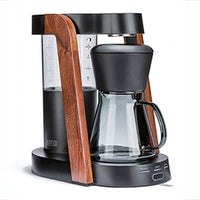 Ratio Eight S2
Ratio Eight S2
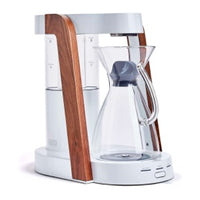 Ratio Eight Original
Ratio Eight Original
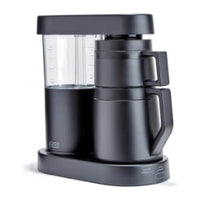 Ratio Six
Ratio Six
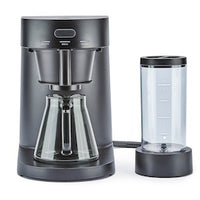 Ratio Four
Ratio Four
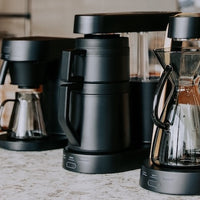 Compare Machines
Compare Machines






